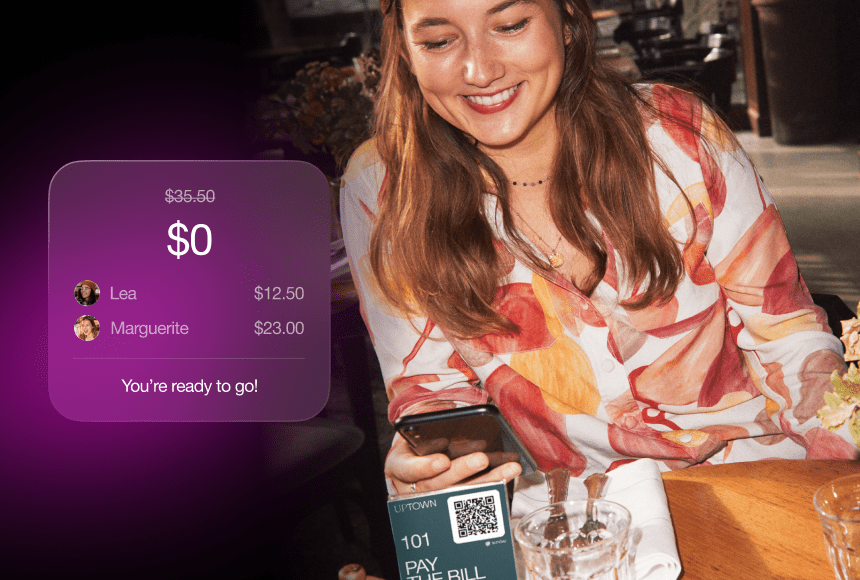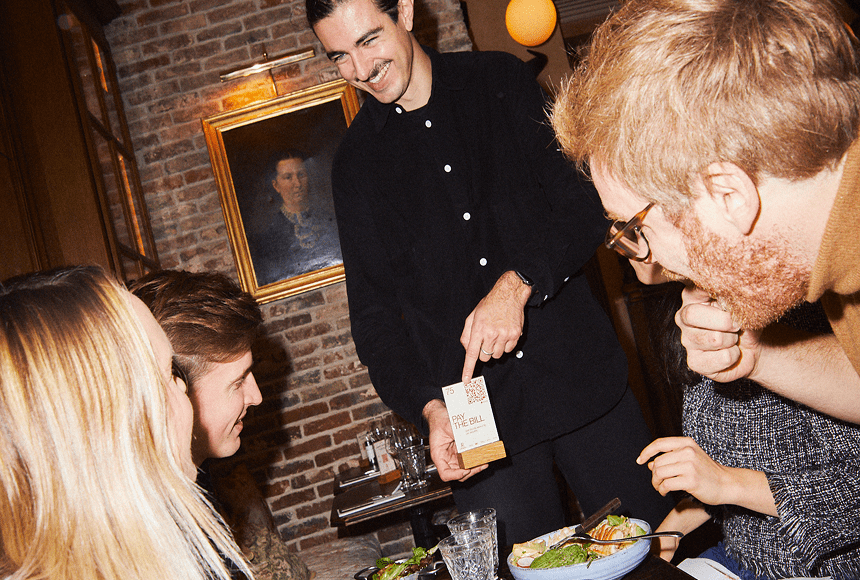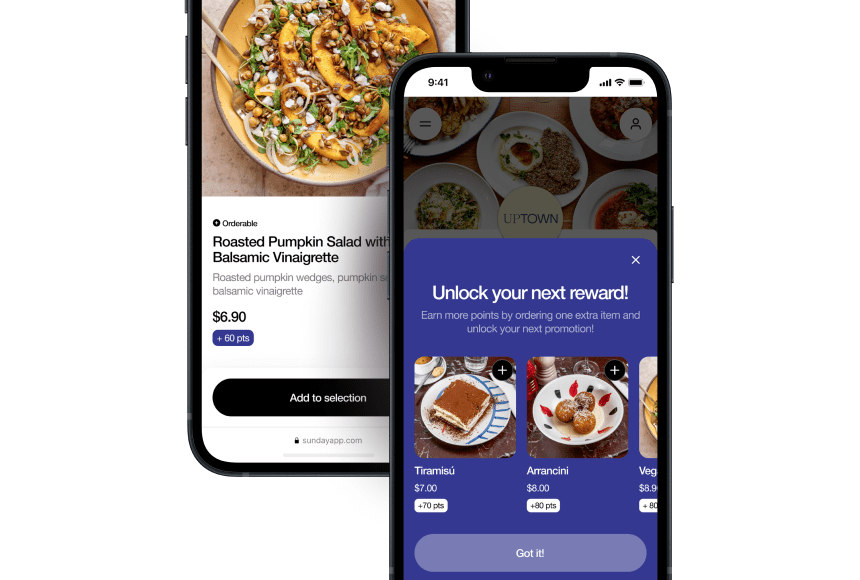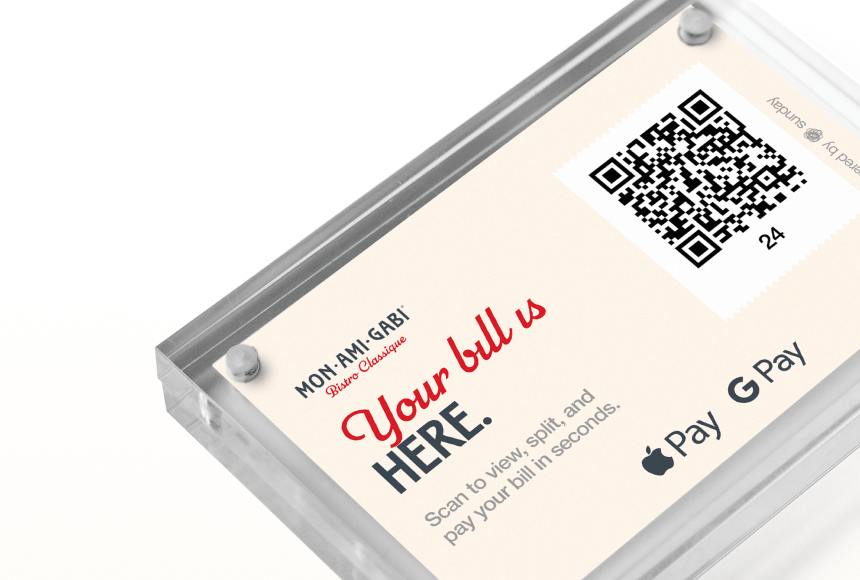
The Surprising Power of QR Code Payments for Restaurants
Understanding the Basics of QR Code Payments
Imagine you’re standing in your busy dining room at peak hours. Servers are juggling multiple orders, guests are chatting, and the energy in the air is buzzing. Suddenly, a table is ready to settle their bill. Instead of waving down a server or lining up at the card reader, they simply scan a quick-response (QR) code on the table with their phone, tap to pay, and—voilà—transaction done! It almost feels like magic. But it is not magic; it’s the reality of QR code payments.
QR codes are those small black-and-white patterns that smartphones easily detect and convert into an action—like opening a payment page. Although they’ve been around for years, QR codes have gained enormous traction recently in hospitality, and especially in restaurants. What started as a convenient way to display menus has evolved into a full-fledged payment solution that eliminates friction during checkout. Whether you run a cozy café or operate multiple dining establishments, it’s helpful to understand precisely what is going on under the hood when we talk about “QR code payments.”
In simple terms, a QR code payment system lets diners scan a secure code that links directly to the payment interface for their bill. They can review the charge, adjust tips, and confirm payment on their phone—no waiting around, no handling of physical bills, and definitely no awkward rummaging for a card machine. This level of convenience might sound futuristic, but it’s available today and, as many restaurant owners have discovered, it can transform the guest experience in more ways than one.
Why QR Code Payments Aren’t Just a Passing Trend
You might be thinking, “QR codes have been around for a while, so why the sudden hype?” Here’s the truth: the surge in contactless interactions, plus a generation of guests who practically live on their smartphones, has positioned QR code payments to thrive.
According to Statista, the global adoption rate of mobile payments—including QR code payments—is set to grow substantially in the next few years. People are more comfortable using their phones to pay than ever before. And it’s not just millennials—boomers and Gen Xers are joining the trend. Reasons vary: from hygiene (less physical contact) to speed (no back-and-forth with a server), to plain old curiosity. After all, scanning a code feels neat and modern, like you’ve stepped into an innovative, tech-savvy environment.
For restaurant owners, this shift is powerful. By integrating QR code payments, you’re not only meeting a newly developing demand but also positioning your restaurant as customer-focused and forward-thinking. Guests quickly see the advantage and appreciate not having to wrestle with printed checks or wait for handheld card terminals to arrive at the table. They can settle up at their convenience and get on with their day (or evening). That’s the kind of experience that encourages positive reviews and repeat visits.
Less Hassle, More Efficiency: Operational Benefits You Might Not Expect
Crunch time in restaurants can get hectic. You know the drill: the kitchen’s pumping out entrées, servers race to refill drinks, and someone’s trying to close out a tab at the bar. Now, layer on top of that the typical payment process—the server has to bring over the check, wait until the guest is ready, run their card, return with a receipt, process tips, get a final signature. It’s not the most efficient system.
Enter QR code payments. Instead of juggling manual receipts and credit cards, you offer your guests the choice to complete the transaction themselves. This shift frees up staff time: servers can focus on giving personalized service rather than spending precious minutes on administrative tasks. The streamlined workflow reduces wait times too. Guests can pay and leave as soon as they’re ready. This faster turnover is especially meaningful on busy nights. The more seamlessly a table closes out, the sooner you can seat the next group.
Restaurant owners who have adopted QR code payment often report:
- Reduced lines at the cashier or bar: When each table payments are handled on personal devices, you remove bottlenecks.
- More attention to guest satisfaction: Front-of-house staff can focus on hospitality rather than swiping cards.
- Faster table turnover: Guests enjoy a shorter wait and are more likely to leave on a positive note, potentially increasing revenue.
- Less paper clutter: No more chasing after receipts and pens. Everything is stored digitally for easy recordkeeping.
It’s like trimming the fat from a recipe—each step becomes cleaner, more efficient, and better suited for the fast-paced needs of a restaurant environment.
Adapting to Different Service Styles: From Casual Cafés to Upscale Dining
One of the biggest misconceptions about QR code payments is that they only suit “fast casual” restaurants or quick-serve concepts. But that’s not true at all. In reality, QR codes can adapt to nearly any service style, including upscale restaurants where tradition and ambiance matter.
In a white-tablecloth establishment, guests might appreciate the discreet check presentation that doesn’t break the dining flow. Instead of waiting for the server to come back with the credit card machine, diners can take control of the payment process right from their seat. As a restaurant owner, you still have the freedom to personalize how you present the code. Some restaurants print unique QR codes on elegant cards placed in small envelopes, preserving that sense of luxury while still giving diners the ease of contactless payment.
Likewise, if you run a casual brunch spot where people pop in and out, placing QR codes directly on the menu or on tabletop signage speeds up the process. Either way, the guiding principle is flexibility. Guests can pay how and when they like, and you’re not tied to a one-size-fits-all approach.
Let’s Talk Tips and Reviews
For many US-based restaurants, tipping is a linchpin of both staff compensation and customer culture. Will switching to a QR code-based payment system jeopardize tips? Actually, in many cases, QR code payments can boost them. When guests pay through a digital interface, it’s easy to place clear tipping options or presets, such as 18%, 20%, or 25%, right on the payment screen. These preset recommendations often translate into higher average tips compared to an open field on a paper receipt. It’s not about tricking guests into over-tipping; it’s about making the process transparent and straightforward. Having the tipping prompt in front of them at checkout can remind them to be generous, especially if they enjoyed exceptional service.
But there’s more to it. Some QR code payment systems—like sunday—can also include integrated Google review prompts. As soon as a diner completes their payment, they are invited to leave feedback. When guests are feeling appreciated (especially after a good meal), they’re more likely to share a five-star review with just a few taps. Consequently, this arrangement not only supports your bottom line but also builds your online reputation. In today’s digitally driven environment, glowing Google reviews can be as valuable as word-of-mouth recommendations once were.
Addressing Security and Building Trust
No one wants to compromise on payment security. And when it comes to credit card information, trust is paramount. QR code payment solutions typically use encrypted connections, tokenization, and compliance standards (such as Payment Card Industry Data Security Standard, commonly known as PCI DSS) to ensure that the transaction is secure from end to end.
A typical QR code transaction flow goes like this:
- The guest scans a code that’s unique to their table or bill.
- They’re directed to a secure payment page, which shows them their itemized check.
- They pay via preferred method—credit card, mobile wallet, or even alternative payment platforms—without ever handing over physical financial details.
- The transaction is authorized and confirmed, and the restaurant receives payment securely.
Because no physical card is being passed around, the risk of skimming or card theft is diminished. And since the transaction is encrypted, the data can’t be easily intercepted by bad actors. For restaurant owners, investing in a reliable QR code payment provider is non-negotiable to ensure that all these essential security measures are in place. Guests who sense their data is protected will trust your establishment more, and that trust can translate to loyalty over the long term.
How It Helps Staff: Cutting Back on Stress and Errors
Sure, any new technology requires a bit of onboarding and a few “how does this work?” moments. But ask any server who’s worked with manual credit card processing if they enjoy having to keep track of multiple tickets at once. Chances are, the answer will be a resounding no.
QR code payment systems can lighten the load on your team. Your servers become freed from moving back and forth to the payment station. They spend less time confirming each check total or dealing with potential mathematic slip-ups during tip calculation. This shift means fewer mistakes overall—no more second-guessing whose card was run for which table or dealing with mix-ups. It’s easy for all parties to confirm the correct bill and tip amount because the information is displayed in real time. If a guest or server notices a discrepancy, it can be sorted out on the spot, rather than discovered hours later when you’re closing out for the night.
Without the headache of repeated payment runs, your staff can better take care of special requests, recommend menu items, and maintain that personal touch that keeps guests coming back. That’s a welcome change for employees who joined the hospitality industry to deliver great service, not to turn into walking cash registers. With the stress of financial transactions minimized, morale can improve—and a happier team often leads to a better guest experience, too.
A Real-World Example: The Riverfront Café
Let’s consider a hypothetical yet realistic scenario. Chef Elena owns The Riverfront Café, a mid-sized restaurant located near a scenic riverwalk. It’s bustling on weekends with families and couples who linger to enjoy the view. Waiting around for the check is a consistent pinch point: guests appreciate a laid-back dining experience, but when they’re ready to leave, they can become impatient. Servers also scramble to handle tables turning over at the same time.
Chef Elena decides to incorporate QR code payments at every table. Within a month, she observes:
- Table turnover acceleration: Patrons who need to leave can pay instantly, freeing up space for the next wave of guests. Revenue per hour marginally increases, particularly during brunch rushes and dinner service.
- Staff relief: Servers devote more energy to giving recommendations about the day’s specials rather than shuttling back and forth with credit card machines.
- Bump in tips: Thanks to user-friendly tipping prompts, many guests round tips up from their usual 15% to 20% or more.
- Positive reviews: The easy in-app prompt for Google reviews encourages diners to share their good experiences while still at their table, boosting The Riverfront Café’s online visibility.
For Elena, implementing QR code payments did more than just speed up transactions; it crystallized how the restaurant could harness technology to enhance customer care. The Riverfront Café felt more modern and better prepared to meet the needs of diverse guests who have different expectations—and different timetables.
Beyond the Transaction: Additional Perks of QR Code Payments
What if we told you QR code payments go beyond just taking money? Here are a few overlooked perks that can benefit a restaurant’s overall operations and branding:
- Digital Menus and Upselling: Adding a simple button that returns guests to your digital menu can make suggestive upselling a breeze. They can browse desserts or signature cocktails if they want to add a last-minute item before settling the bill.
- Gathering Feedback: Some QR solutions offer the chance to collect direct feedback or quick survey responses. You can tailor questions (“How did you enjoy our new brunch specials?”) and gather insights without relying on comment cards or random online posts.
- Order Accuracy: If you also utilize QR codes for ordering, guests punch in their choices themselves. This reduces the chance of miscommunication between a guest and a busy server. Fewer mistakes mean fewer costly comps or unhappy diners.
- Brand Consistency: Your QR code’s landing page can be designed to reflect your restaurant’s brand, from logos to color schemes. This continuity reinforces your identity and leaves a polished impression.
Practical Considerations for Implementation
Deciding to adopt a QR code payment system is a big step. Here are some pointers to help ensure a smooth rollout:
- Choose a Reputable Provider: Security, reliability, and customer support should be top priorities. Look for providers compliant with major payment regulations.
- Seamless Integration with Your POS System: Make sure the QR solution communicates smoothly with your existing operations. Otherwise, you risk double data entry or confusion about sales numbers.
- Train Staff: A quick training session for hosts, servers, and bartenders can prevent confusion. Everyone on your team should know how to explain the QR payment process to curious guests.
- Promote Comfort and Familiarity: Consider placing small table signs or friendly notes to let guests know how easy it is. Encourage them to ask questions; reassure them that if something goes awry, staff are there to help.
- Test the System Before Going Live: Do a walkthrough from both the server’s end and the guest’s perspective. Work out any kinks before prime time.
Why It Matters for Busy US-Based Restaurateurs
In the United States, where tipping culture reigns, speed and convenience matter not only to guests but also to your bottom line. By eliminating the back-and-forth associated with traditional payment steps, you create a more pleasant experience for all. You also open the door to a modern approach to tipping—one that’s integrated, intuitive, and proven to yield better gratuities.
Additionally, the nature of American dining habits often leans toward group outings and split checks. QR code systems typically handle these scenarios more gracefully. Guests can split the bill on their smartphones, pay individually, and include separate tips. That eliminates the awkward “Can we split the bill six ways?” conversation and speeds up the entire process on your side. With the labor shortage issues that many restaurants are facing, every minute counts. You want your staff actively providing service, not transcribing credit card numbers.
From a marketing perspective, US-based diners often look at reviews before picking where to eat. Having a built-in prompt to leave feedback right after payment is incredibly powerful. That’s why some owners see a spike in online ratings after adopting QR code payment solutions. When it’s easy and quick to share a positive experience, diners are more likely to do it.
Dispelling Common Myths About QR Code Payments
Despite their growing popularity, a few myths persist in the restaurant world:
- “It feels impersonal.” On the contrary, QR code payments free up time for real hospitality—your team can focus on guests, not printing bills or running cards back and forth.
- “Some customers won’t adapt.” While a small fraction of diners may be reluctant, most people now carry smartphones. As long as you keep an alternative for those few guests, you’ll be fine.
- “It’s too complicated to set up.” Modern QR code payment systems are designed for user-friendliness. Providers often handle most of the heavy lifting, from generating the codes to working with your POS.
- “Privacy risks are higher.” When properly integrated and PCI DSS compliant, QR code payments are secure, often more secure than the traditional method of handing a card off to someone else.
A Small Investment with Big Returns
Transitioning to QR code payments may cost some time and money to implement—just like any new technology. However, if you look at the bigger picture, the long-term gains usually outweigh the upfront costs. By making checkout faster and more flexible, you enhance your patrons’ experience, encourage repeat business, and build a modern brand reputation in a competitive market.
Moreover, as you streamline your payment workflow, you may cut down on operational expenses or reallocate staff resources more effectively. Those are tangible benefits that can make a real difference to your profit margins over time.
Why sunday Believes in the Power of QR Code Payments
At sunday, we’ve seen firsthand how QR code payments revolutionize dining experiences. We’re a payment solution provider for restaurants that strongly believes in intuitive, user-friendly design—a design that works hand in glove with top-tier security and easy tipping integrations. In short, we believe payment should be the easiest part of the meal, never a stumbling block.
Yes, we’re partial to QR code payments because we’ve watched so many restaurants thrive once they embraced this modern checkout experience. Seeing staff members smile because they’re not bogged down by repetitive tasks is incredibly rewarding. And hearing about the positive feedback from guests? That’s the cherry on top of the sundae—pun intended.
Key Takeaways to Inspire You
QR code payments can be a game-changer for restaurant operators aiming to enhance the guest experience and optimize their workflow. By investing in a dependable QR code payment solution, you’ll likely notice:
- Higher table turnover and more relaxed, confident staff.
- Enhanced customer satisfaction and smoother tipping experiences.
- Improved accuracy in orders and reduced slip-ups at checkout.
- Greater potential for positive reviews and word-of-mouth buzz.
It’s not a gimmick. It’s a tangible shift in how guests engage with your restaurant. And that shift can lead to more revenue, less stress, and a seamless encounter from appetizer to digital checkout.
Frequently Asked Questions (FAQ)
1. Will older customers or those without smartphones be left out?
Not necessarily. While many customers will love using QR code payments, you can still offer a traditional checkout method for those without smartphones. This dual approach ensures you don’t alienate anyone.
2. Is it expensive to maintain QR code software?
The cost varies by provider, but in most cases, the efficiency gains and potential increase in tips offset that expense. Look for transparent pricing models to avoid surprises.
3. Can customers still get an itemized receipt?
Absolutely. Most QR code systems allow for digital receipts via email or text. You can also print one upon request.
4. What if the internet goes down?
Like any system relying on connectivity, QR code payments do require a stable network. However, many providers offer backup or offline modes, ensuring there’s an option to process transactions even if connectivity is spotty.
5. Will all smartphones work with QR code scanning?
Almost all newer smartphone camera apps can scan QR codes by default. If not, customers can quickly download a free QR code reader, ensuring compatibility is rarely an issue.
6. Do QR code payments limit tipping potential?
Actually, many restaurants see an uptick in tipping because the digital interface can suggest tip amounts, making it easier for customers to choose a fair percentage on the spot.
Find out more today
Drop us your details below and we’ll reach out within the next 24h
“Check please” is a thing of the past.
With our integrated QR codes your customers pay in seconds, straight from their table.




